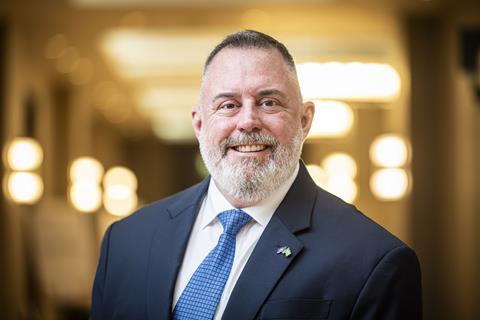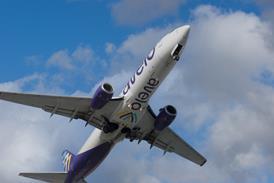Flyadeal chief executive Steven Greenway expects to make a decision by the end of the year on its plan to bring in widebodies, as the Saudi Arabian budget carrier continues to ponder a choice between operating new and used aircraft.
The carrier, which flies Airbus A320 narrowbodies on scheduled routes, already has a growing wet-lease widebody operation focusing on religious traffic and some peak leisure routes. However, the airline is now looking to bring in its own long-haul aircraft.

“Its a combination of things,” Greenway said of the widebody opportunity, updating on the status of the initiative on the sidelines of a UK Aviation Club event in London earlier in November.
“We have high-volume routes, like Thailand for leisure. There will be selective regional [routes] where we really need some lift. And it is then really religious and labour traffic that we are focused on,” he explains. ”The over-arching economics is it’s high-volume, low-yield [routes]. That’s where it sits for us.”
Greenway says the airline has been exploring new aircraft options – namely Boeing 787s or Airbus A330neos – as well as repurposing used 787s, options that are available because it is part of the Saudia Group.
”If we were a standalone player, the way we would approach the market would be very different than being part of the Saudia Group,” he notes.
Saudia already operators GE Aerospace GEnx-powered Boeing 787-9s – a combination that new national carrier Riyadh Air has also selected for its widebody requirements. “They are already in the Kingdom, there’s experience with the engine and the airframe. So you already now have two operators with the 787s and GE engines, so that is one option,” he says.
Another option would be to utilise used 787s from Saudia’s fleet, something similar to what Greenway did before with the launch of SIA Group’s long-haul budget unit Scoot.
“There are upsides and downsides,” he explains. ”Your cost of ownership is virtually nothing as its a written-off asset for the most part, but you have increased maintenance and engine costs. However, the airframes are proven, the engines are proven, and Saudia knows how to operate them like the back of their hand.”
Flyadeal is also considering new Airbus A330neos, with Greenway noting that as it is already an Airbus operator, it is a relatively easy step from the A320 to the widebody.
He adds: ”If you take the A330neo or the [new] 787, you’ve got a cost of ownership that you have to deal with and make sure you get the right price. You don’t have that with used aircraft, but you’ve got the fuel efficiency from a new widebody. So that is why it’s taking us longer than I would otherwise like. But we are being as thorough as we possibly can and they’ve all got positives.”
Delivery timelines are also a key consideration for new aircraft, given Flyadeal also has an expanding wet-lease widebody operation to meet current demand.
“We have already been a widebody operator, albeit on the wet-lease side. So we are becoming very familiar [with it],” he notes. ”So we’ve gone from three to five to seven wet-lease widebodies in the space of three years.
“We are looking at 2027-28 [for delivery] because it becomes problematic for us if we are growing at the pace we are on wet-leases. We are going to have quite a large wet-lease operation in two, three years time and I really want to start seeing our fleet start coming in and balancing and supplementing that out.”
He believes a 2027-28 delivery is “achievable” but notes “that window will disappear in the next six months anyway”.
Flyadeal already operates 36 Airbus A320s – including 25 neos – and will grow to reach a fleet of 88 in four years’ time. By that point it will operate an all Neo fleet, including A321neos. The first of 39 A321neos – part of a fresh order for 51 Airbus narrowbodies placed earlier this year – will join the fleet in the first quarter of 2026.


























